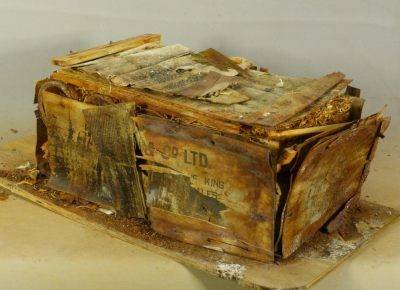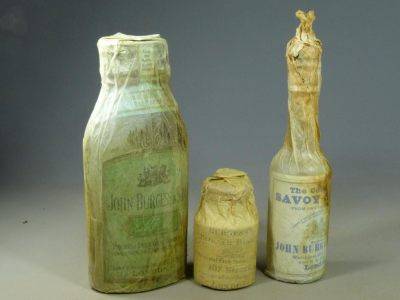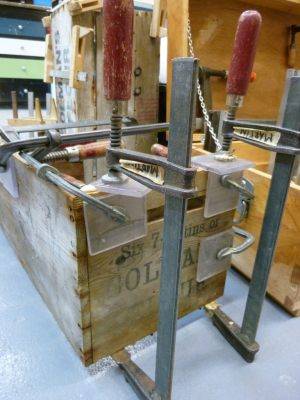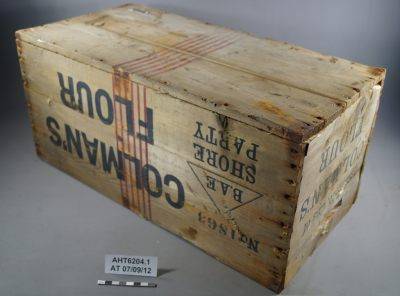Author: Jaime
Date: 30 July 2013
Temperature: -31
Wind speed: 20 knots
Temp with wind chill: -49
Sunrise: N/A
Sunset: N/A
Having completed the restoration of the solid timber boxes from Bowers Annex, our attention is now focused on the fifty odd Venesta (VENeer from ESTtoniA) boxes, most of which were recovered from the same area.
These boxes formed part of a makeshift wall at the back of Scott’s hut at Cape Evans, but whereas the timber boxes were fairly sturdy, containing metal liners, densely packed with Colmans flour tins, the Venesta boxes are far more delicate objects, fabricated from 4mm plywood panels, riveted to each other through a light, steel, angled edging and filled with a huge variety of tinned and bottled food.
Unopened but full Venesta case
One hundred years of weather and corrosion have reduced the metal edging and canned contents to crumbling rust and the boxes to a mass of delaminated plies. It is only because they were excavated from densely packed snow and ice that both the panels and contents of some of the Venesta boxes have at least remained together.
Luckily though, the odd Venesta box fared better, opened but forgotten in a quiet corner of the hut and crucially, remaining relatively dry, and undisturbed until this week. Within, nestled in straw, perfectly preserved bottles, wrapped in delicate tissue paper, as immaculate as the day they were packed.
100 year old Venesta contents









.jpg)